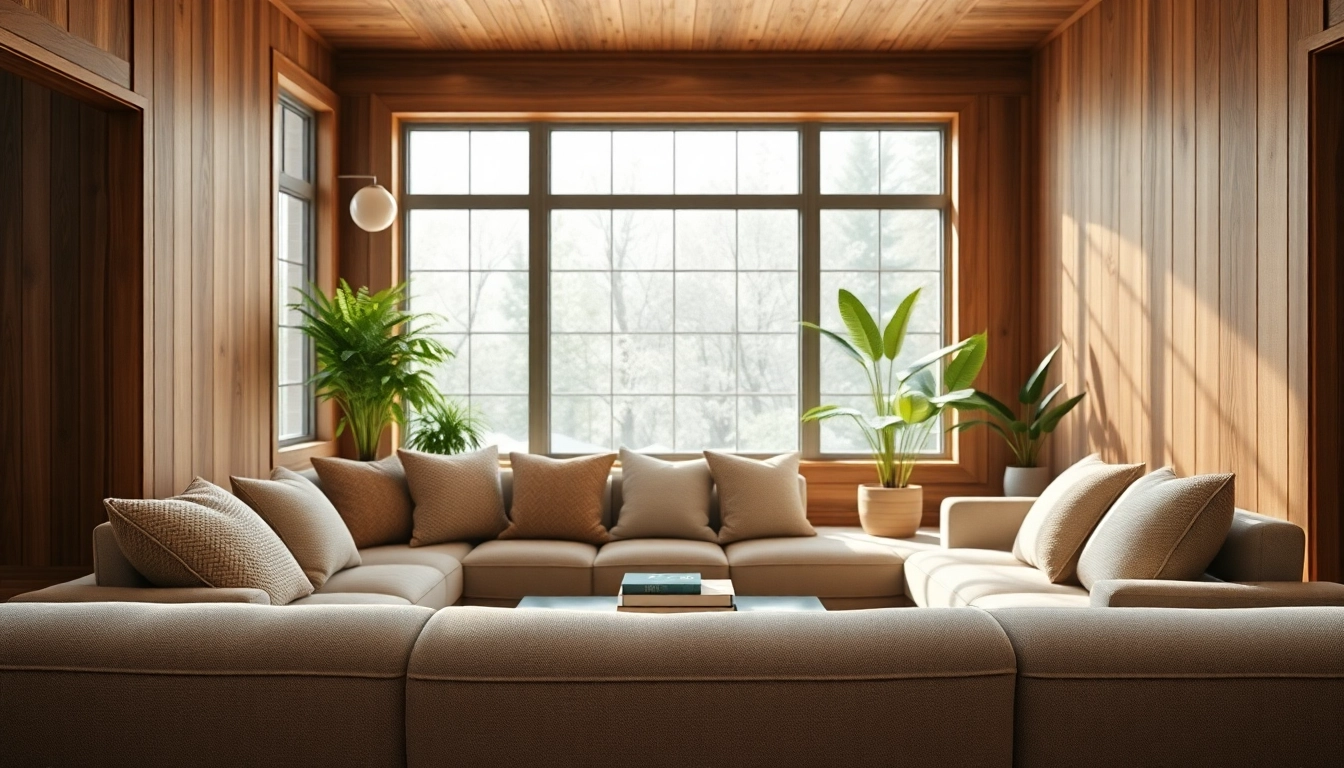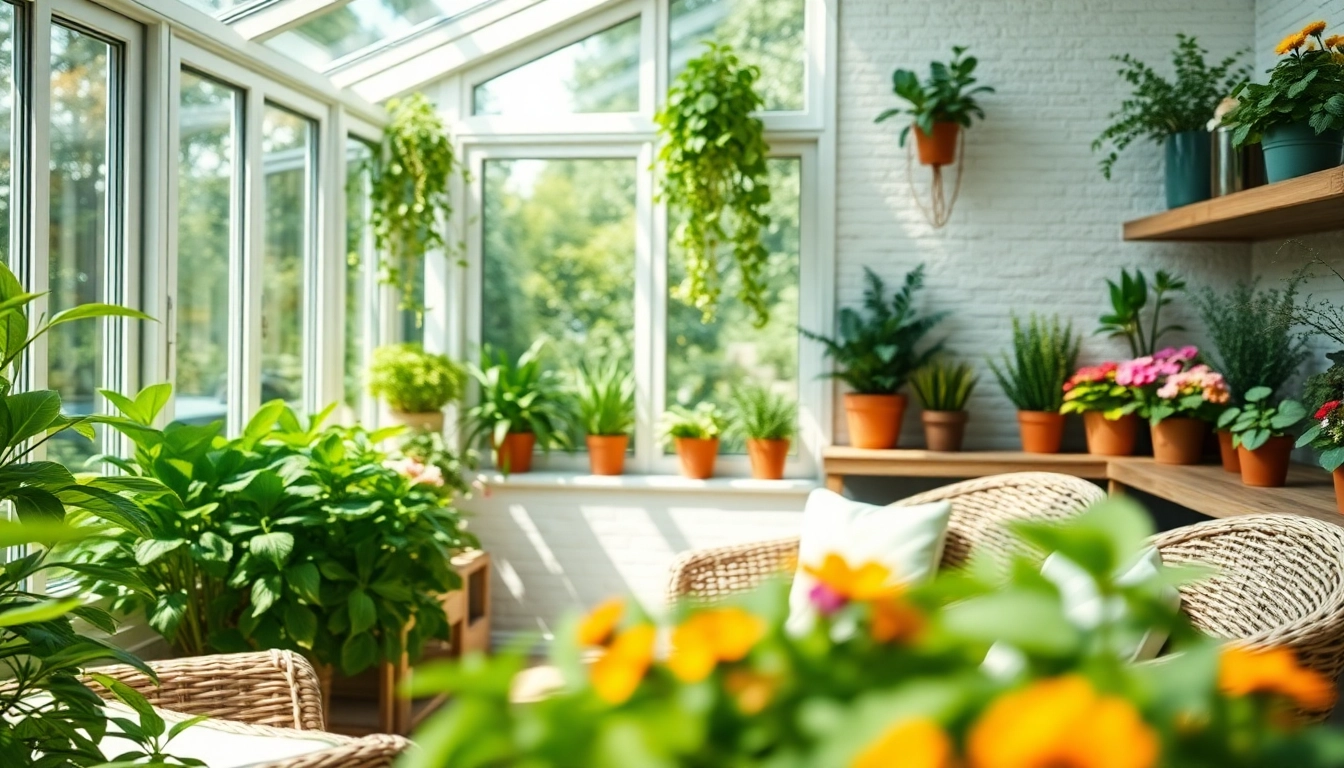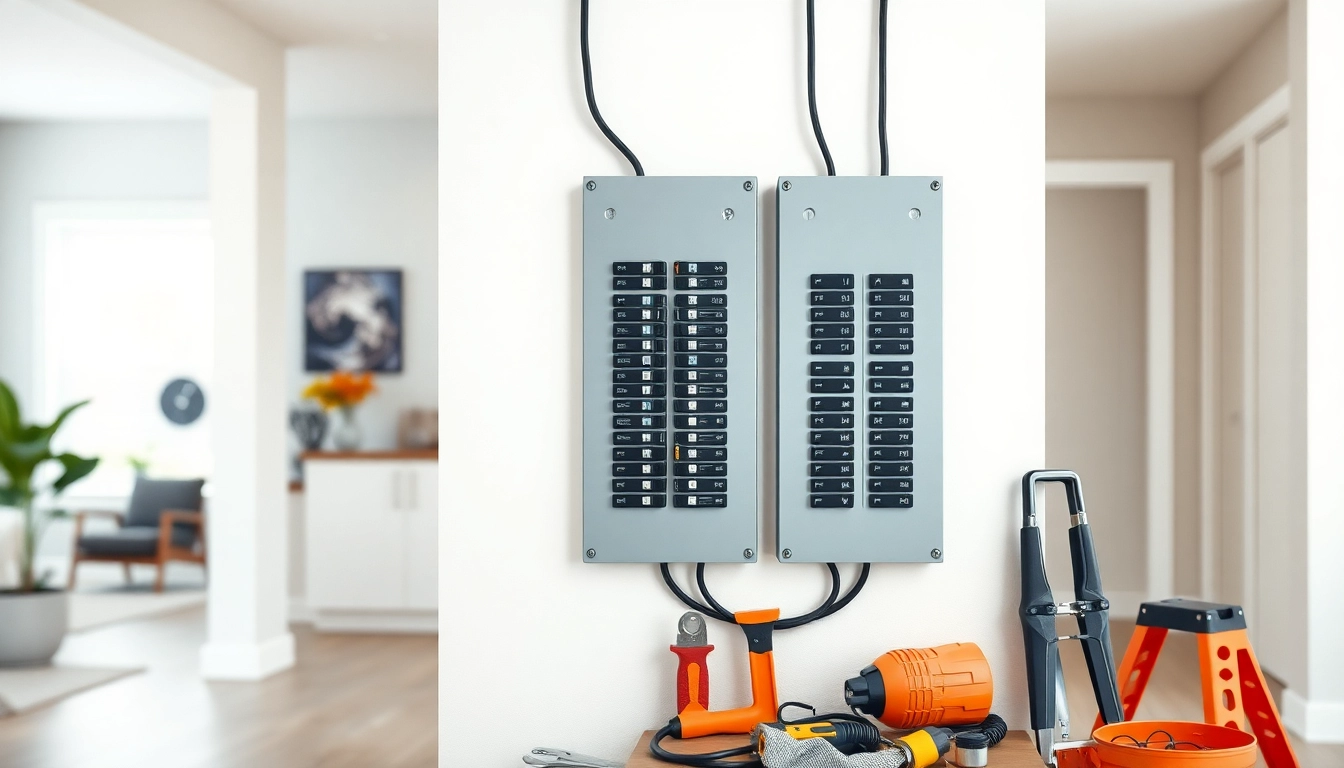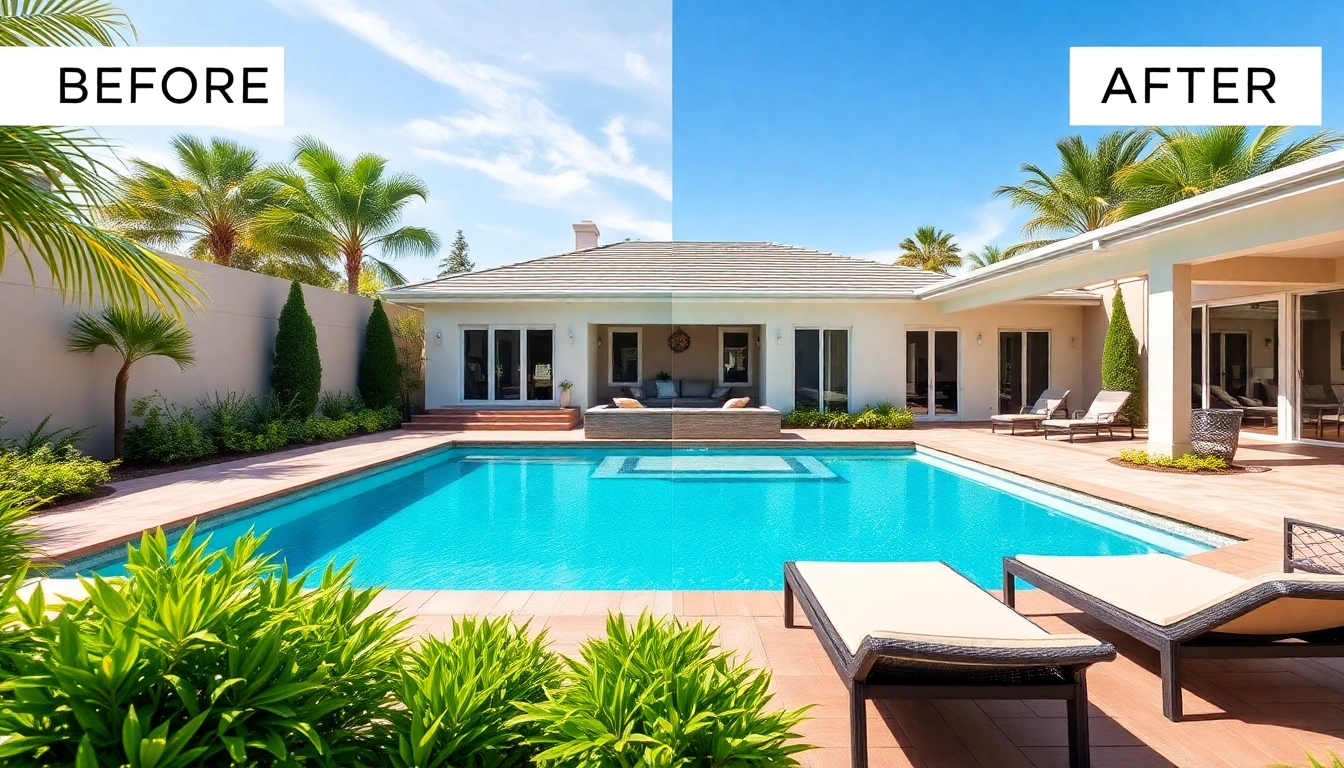Understanding Wood Interior Walls
What are Wood Interior Walls?
Wood interior walls are a sought-after feature in both residential and commercial spaces, defined by their aesthetic appeal, durability, and versatility. These walls are constructed from various types of wood, which can be used either in their natural form or treated to achieve specific finishes. Unlike traditional drywall or plaster, wood offers a unique tactile quality and warmth that enhances the visual and physical aspects of a space. Integrating wood interior walls into a design can transform an ordinary space into an inviting and stylish environment.
Benefits of Wood Interior Walls
The appeal of wood interior walls extends beyond aesthetics. Here are some significant benefits:
- Aesthetic Versatility: Wood can complement various design styles, from rustic to modern. It can be stained, painted, or left in its natural state to match any decor.
- Insulation Properties: Wood serves as a natural insulator, helping to regulate temperature while reducing energy costs.
- Durability: Quality wood can withstand wear and tear, making it a long-lasting choice for interior walls.
- Sound Absorption: Wood has excellent acoustic properties, absorbing sound and enhancing privacy within spaces.
- Eco-Friendliness: Sustainable wood sourcing methods enable environmentally friendly building practices, contributing to a healthy living environment.
Types of Wood Used for Interior Walls
When choosing wood for interior walls, the type of wood plays a crucial role in the overall look and functionality. Here are some popular options:
- Pine: A lightweight, affordable option that’s easy to work with. It can be painted or stained to achieve the desired aesthetic.
- Cedar: Known for its natural resistance to decay and its pleasant scent, cedar is perfect for creating a rustic charm.
- Oak: This dense and durable wood adds a rich texture and is often used in high-end applications.
- Maple: With its fine grain and light color, maple is a favorite for contemporary designs.
- Walnut: Offering a dark, luxurious finish, walnut is often used in upscale designs, although it is a more expensive option.
Designing with Wood Interior Walls
Color Schemes Complementing Wood Interior Walls
Choosing the right color scheme that complements wood interior walls is decisive for enhancing the room’s ambiance. Neutral colors such as whites, creams, and greys provide a beautiful contrast, allowing the wood’s texture to shine. For a cozier feel, earthy tones like terracotta, muted greens, and soft blues can harmonize with the warm hues of wood. Moreover, bolder colors, such as deep blues or rich burgundy, can create a dramatic backdrop that draws attention to wooden wall features.
Choosing Furniture for Wood Interior Walls
When selecting furniture for spaces with wood interior walls, it is essential to consider materials, colors, and styles that synergize with the wood’s characteristics. Furniture made from metal or glass can create a modern contrast against the warmth of wood. Additionally, choosing a mix of textures, such as soft fabrics and smooth finishes, can enhance the overall aesthetic while maintaining balance. Minimalist designs often work well, keeping the focus on the natural beauty of the wood walls.
Creating Balance with Decor
Achieving visual balance in a space with wood interior walls involves considering shapes, colors, and textures. Introduce decor elements such as artwork, mirrors, and lighting that either contrast with or complement the wood tones. For instance, using metal frames against a light wood wall can provide a modern twist, while pairing rustic decor pieces with darker woods can accentuate a traditional feel. Layering textiles like throws and cushions can also help soften the look, making the space more inviting and comfortable.
Installing Wood Interior Walls
Preparation Steps for Installation
Proper preparation is key to a successful wood interior wall installation. Before beginning, it is crucial to plan the layout, choose the right wood type, and prepare the underlying surface. The following steps should be taken:
- Assess the Space: Measure the area where the wood will be installed to ensure you purchase the correct amount of materials.
- Choose the Wood: Select a wood type that suits the room’s intended style and purpose.
- Prepare the Walls: Ensure the existing walls are clean, dry, and structurally sound. Patch any holes or imperfections and consider adding insulation if needed.
- Gather Tools and Materials: Equip yourself with the necessary tools, such as a saw, level, nail gun, and appropriate fasteners.
DIY vs. Professional Installation
The decision between DIY installation and hiring a professional largely depends on your skill level and comfort with tools. DIY offers cost savings and personal involvement, allowing for a more customized touch. However, it’s essential to understand that installation requires precision and an eye for detail. Hiring professionals can be beneficial for complex designs or larger projects, ensuring the installation is done correctly and efficiently. They can also offer insights and solutions that a novice might overlook.
Common Installation Mistakes to Avoid
Even experienced DIYers can make mistakes during installation. Here are common pitfalls to avoid:
- Inadequate Measurements: Double-check measurements before cutting to avoid wasting materials.
- Poor Ventilation: Ensure adequate ventilation when installing wood to avoid moisture-related issues.
- Neglecting Expansion Gaps: Wood expands and contracts with changes in humidity; leave expansion gaps to prevent warping.
- Rushing the Installation: Take your time to ensure each panel is aligned correctly and securely fastened.
Maintaining Wood Interior Walls
Cleaning and Care Tips
A critical aspect of maintaining wood interior walls is keeping them clean and well-cared for to prolong their lifespan. Regular dusting with a microfiber cloth can prevent the buildup of dust and dirt. For deeper cleaning, consider using a mild detergent mixed with water. Avoid harsh chemicals and abrasive materials that can damage the wood finish. Whenever possible, follow up with a conditioner specifically designed for wood to enhance and protect its natural luster.
Addressing Wear and Tear
Over time, wood interior walls may face wear and tear, such as scratches, dents, or fading. To address these issues:
- Sanding: Minor scratches can often be sanded out and refinished to restore the original appearance.
- Touch-up Paints: For painted finishes, having a matching touch-up paint can cover scuffs or scratches effectively.
- Re-staining: If the wood appears faded, consider re-staining to refresh its color and protect the surface.
Long-term Maintenance Strategies
Long-term maintenance of wood interior walls involves proactive measures to ensure their durability. Consider using a humidifier in drier months to keep the moisture level consistent, as extreme dryness might cause the wood to crack. Regularly inspect the wood for any signs of pests or damage, and address these issues promptly to avoid major repairs. Additionally, maintaining finishes, with periodic reapplication of oils or varnishes, will protect the wood and keep it looking beautiful for years to come.
Trends in Wood Interior Walls
Current Styles and Innovations
Wood interior walls continue to evolve with new styles and innovations. One growing trend is the use of reclaimed wood, which not only adds character but also supports sustainability. Furthermore, vertical wood paneling is making a resurgence, creating an impression of height and spaciousness in a room. Mixed media walls—integrating wood with other materials such as stone or metal—are also becoming popular, offering a unique way to accentuate designs.
Incorporating Sustainability in Wood Choices
As awareness of environmental responsibility grows, so does the importance of sustainability in wood choices. Selecting wood sourced from certified sustainably managed forests is vital. Additionally, opting for engineered wood products can reduce dependence on solid wood, minimizing ecological impact without compromising style or performance.
Future Trends for Wood Interior Walls
Looking forward, the innovation in wood technology is set to transform how we perceive and utilize wood interior walls. Advancements in treatment processes could lead to surfaces that are more resistant to moisture and wear. Smart wood technologies may even emerge, integrating electronic features for enhanced functionality without sacrificing aesthetics. As design trends evolve towards personalization and eco-friendliness, wood’s natural beauty will continue to play a significant role in interior design.














Leave a Reply